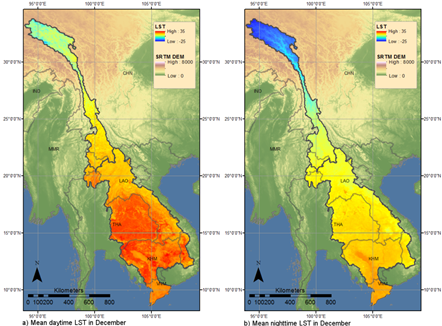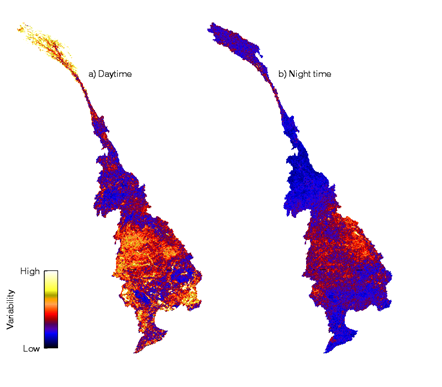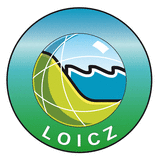Analysis of MODIS Land Surface Temperature in the Mekong Basin
Land surface temperature (LST) can be used as indicator for climate variability and change and is measured by various satellite sensors. For this research MODIS (Moderate Resolution Imaging Spectroradiometer) data were used to analyze spatial and temporal patterns in the Mekong Basin (MB). The annual curves of LST differ in height and magnitude between different regions of the MB. Main influencing factor proves to be the topography, which explains more than 90% of the long-term LST patterns in the night time scenes. Land use also plays an important role. Areas with intensive agricultural cultivation have generally higher temperatures than its wooded neighboring areas. Large magnitudes and low temperatures are found in the northern areas, mainly in the high-lying region ‘Tibetan Plateau’. The more southern areas are characterized by low LST magnitudes and high temperatures (Figure 1). Unfortunately many scenes in the time series are cloud contaminated, especially during the SW Monsoon from May to mid-October. This complicates the spatial and temporal analysis of LST; in some regions no valid long-term mean could be derived.

Figure 1: Mean daytime (a) and night time (b) December LST in the Mekong Basin.
The Tibetan Plateau shows a strong year-to-year variability; regional weekly daytime night time deviations there reach 6°C/18°C. Other areas with high variability are regions with large cropland areas (e.g. in the Mekong Lowlands) and at the southern coast of Vietnam where wetlands mix with aquaculture. Lower variability is found in the transition zone between the Tibetan Plateau and the Mekong High- and Lowlands, most parts of the Mekong Highlands with large evergreen forests, and the Tonle Sap Lake in Cambodia. Generally, the variability is larger in the daytime scenes than in the night-time scenes (Figure 2).

Figure 2: Day time and night time variability of LST in the Mekong Basin. The variability is expressed as the standard deviation of all mean annual deviations.




